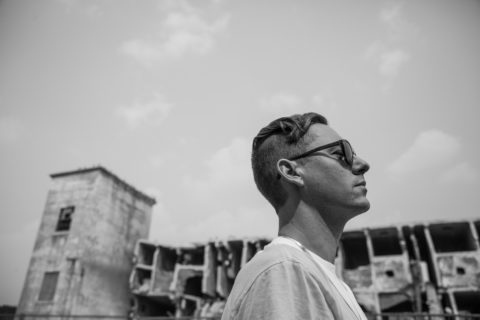Saskatoon-based musician Graham Murawsky, known on the stage as Factor Chandelier, is set to perform music infused with local history for his hometown on Sept. 24 at the Capitol Music Club.

Factor Chandelier is set to play the Capitol Music Club on Sept. 24 with atmospheric beats and flowing lyrics.
Murawsky recently released a followup to his concept album, Woke Up Alone, entitled Factoria. This album has 13 tracks of atmospheric beats and flowing lyrics inspired by the failed industrial city of Factoria, which was a business venture initiated by Robert E. Glass in 1912 just outside of Saskatoon. He had a dream of creating a manufacturing city based on the province’s natural resources.
This city, from which the LP draws it’s name, met it’s failure at the onset of the First World War due to the financial strains caused by the conflict. As banks began to stop giving out loans, the city of Factoria began to fade into obscurity.
While the failed city eventually became the residential neighbourhood of Silverwood Heights, Murawsky attempts to bring the dream to life through his LP with pounding beats that illustrate the pounding of industry and illuminate the concept of this city much akin to city lights.
This effect is best captured when listening to the instrumental versions of the tracks that Murawsky has also released, as it bares the music down to the foundations — from which the idea can be seen. However, when listening to the lyrics of the standard LP, the setting of Factoria plays host to a number of emcees that touch on a variety of topics.
An example of this variety can be found in the 10th track of the album, “Shoulders of Giants” which abstractly discusses ancient architecture through punchy lyrics. Then there is the fifth track, “Noise Band,” which brings the artists AWOL One, Gregory Pepper and Ceschi together to feature on a self-depreciative track that altogether brings a very sober air to an album that mainly features abstract songs.
Instrumentals aren’t just for the alternative version of the LP either, as the standard copy mixes them in as well. The LP starts off with “The Magic City,” which holds a rising beat throughout that quickly establishes a tempo and feel for the rest of the album. Murawsky then mixes in a few more instrumentals before ending off with “Old Organs.”
This final track brings with it a somber and dark ending when compared to the first track, featuring more bass and clips of wails and machine sounds used to give a departure from the city that never was.
Ironically, while the concept and name of Factoria has a rich backstory, Murawsky’s stage name itself was much more random.
“I was DJing and selling mixtapes in high school and needed a DJ name. Factor was the best choice and later in my career when Google came out, it was impossible to find me, so I had to make something more unique and went with the full name Factor Chandelier,” Murawsky said.
Murawsky released his first album in 2001 but has been a DJ since the 1990s. While attending the University of Saskatchewan, Murawsky was in the College of Arts and Science and while he found enjoyment in sculpting, he eventually decided to drop out of university and stick to his music career.
Those looking to see Murawsky perform live will be able to do so at the Capitol Music Club on Sept. 24. Murawsky explains what patrons can expect if they attend this concert.
“It will be a party, I will be playing a rare set of all my favorite hip-hop songs spanning from the 1990s until now. The show will include some great live emcees, features from Kay the Aquanaut, performing some new songs we’ve been working on, as well as local rapper Dayda Banks.”
—
Jack Thompson / Staff Writer
Photo: Kaid Ashton / Supplied